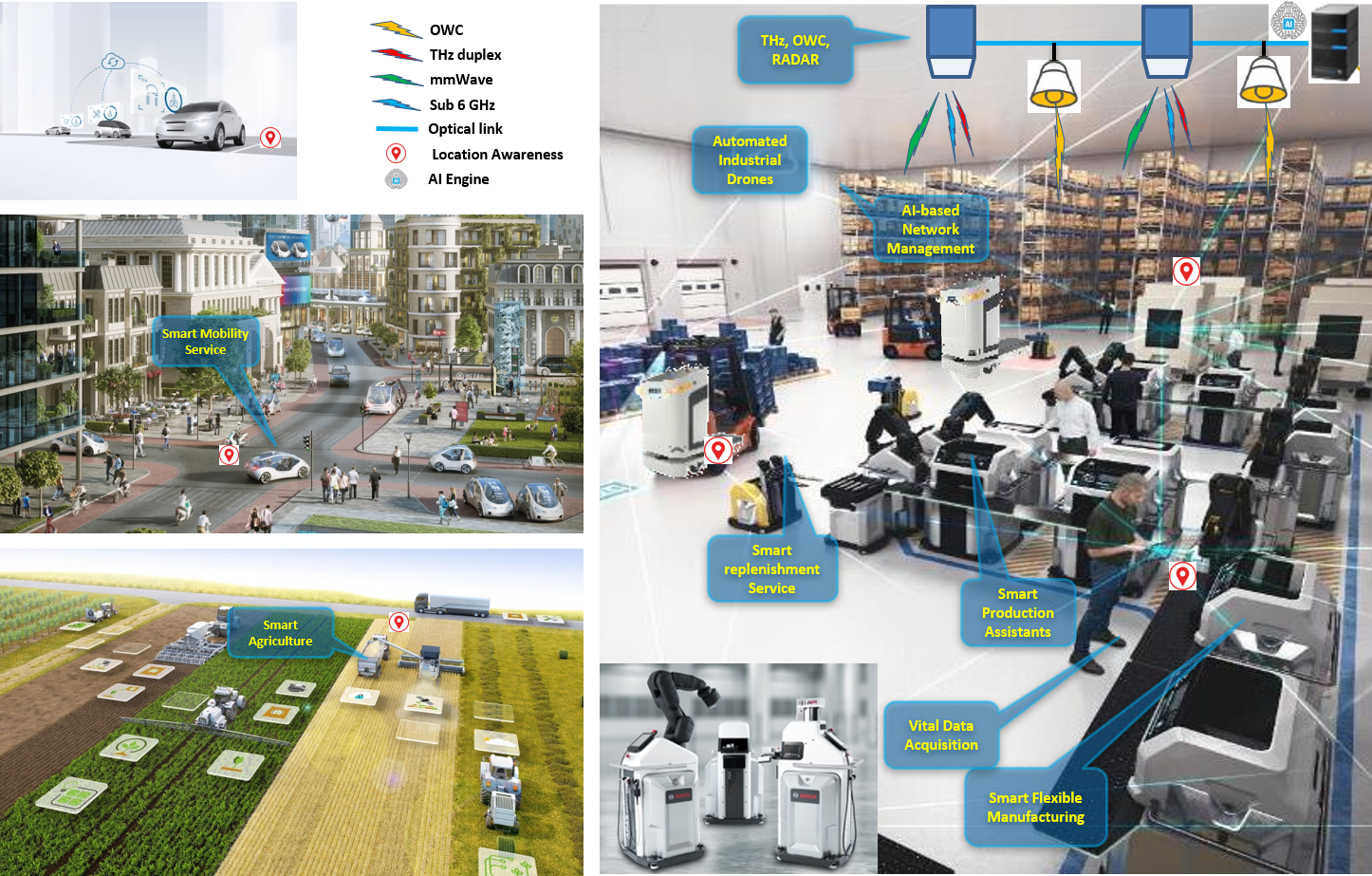A so called “factory of the future” represents one the most challenging applications of the future mobile communication systems. A large number of specific use cases representing this scenario have been described in different bodies including 3GPP and 5G-ACIA (see also figure 1). From the vast list of specific “factory of the future” use cases, 6G BRAINS identified the following ones, which require further improvement of the current 5G technology. The first use case represents the offloading of the control logic from the industrial controller running as part of a production cell on the shop floor to a more centralized computing area called “factory edge” in a virtualized form as a virtual machine or a container. A more centralized approach, where all controllers (real or virtualized) are placed in the same area will significantly increase the flexibility of the production process and reduce the cost. Connecting the production cells through the 6G BRAINS communication system to the “factory edge” shall enable the ease of reconfiguration of hardware and software components on demand. This use case sets very high expectations on the guaranteed latency and deterministic communication that should support low industrial application cycle times and very precise synchronicity. Another use case is represented by wireless video cameras that are easily deployed in every factory production cell at different locations to send high quality and high frame rate video to an image analysing system located at the “factory edge”. By this, a new level of production monitoring is unleashed enabling a long list of new features such as anomaly detection, improved safety, process tracking and logging, remote control and predictive maintenance. This use case has high requirements on the data rate consuming up to 3 Gbps per camera in case of state-of-the-art industrial camera systems. Finally, the combination of these two use cases represents a very challenging approach for a system that is required to provide a precise QoS differentiation by, e.g., creating individual slices for each of the required services.






